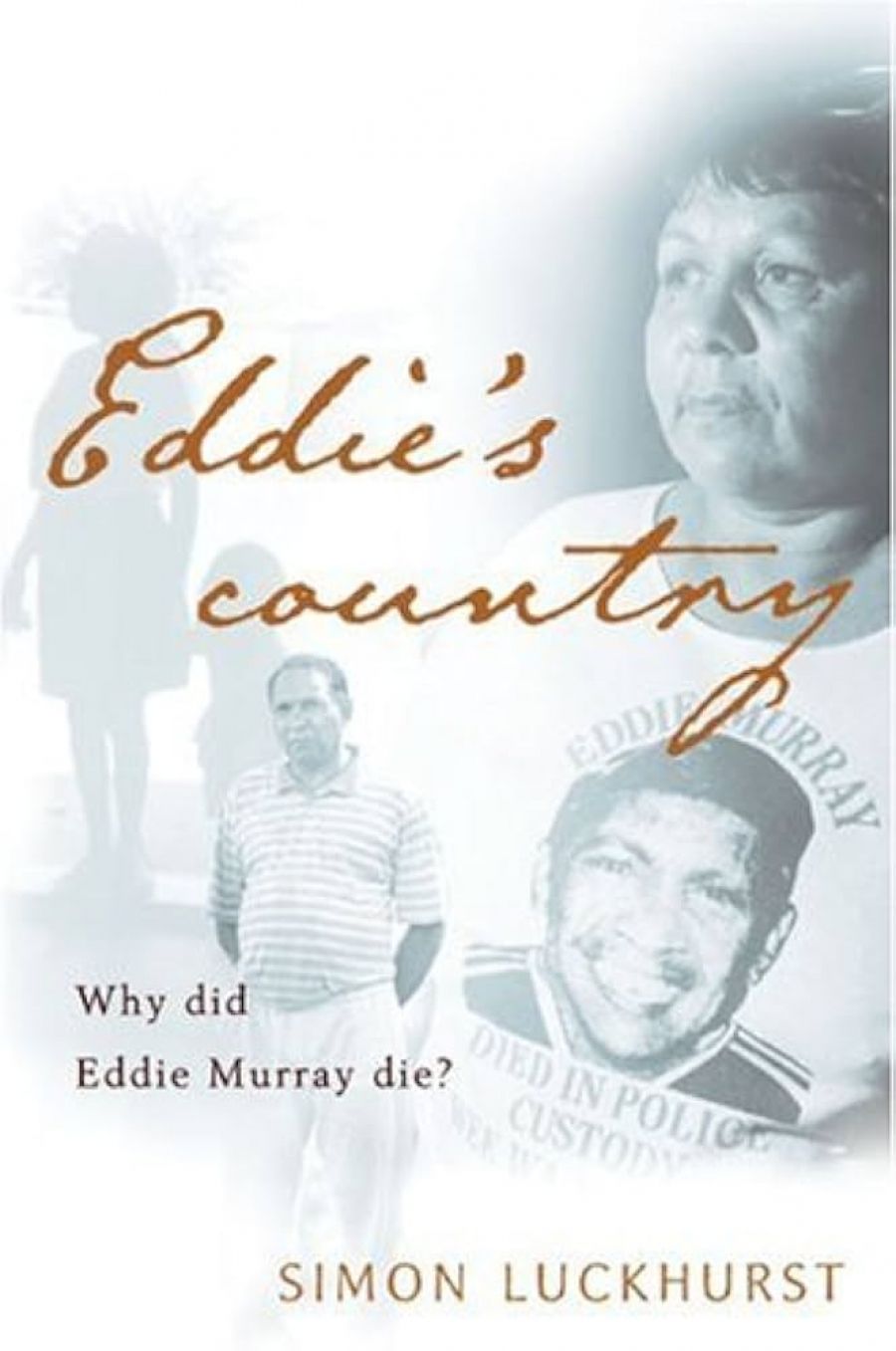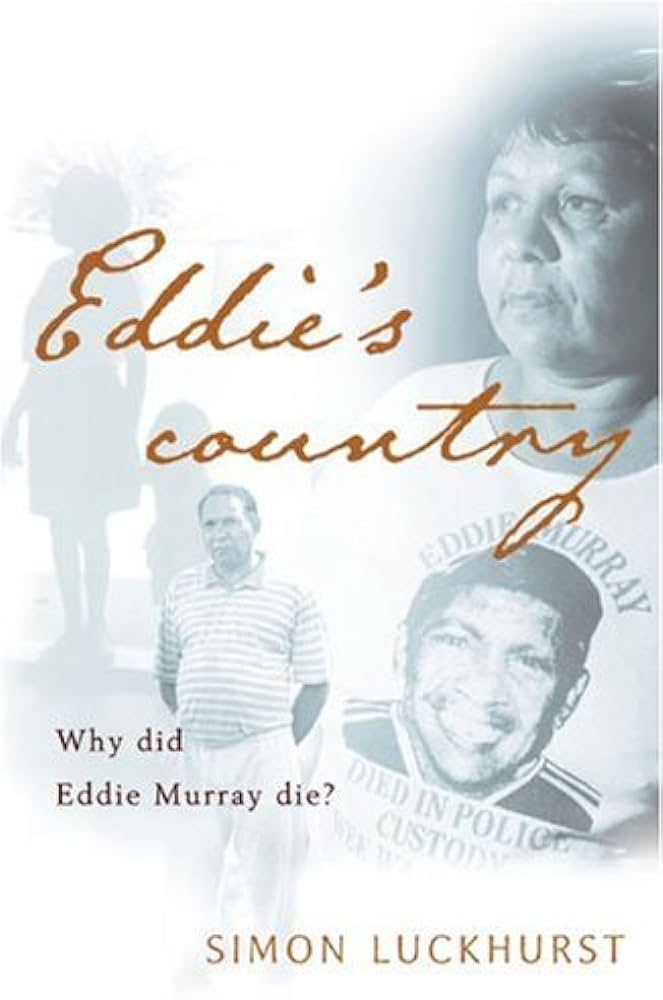
- Free Article: No
- Contents Category: Non-fiction
- Review Article: Yes
- Article Title: A kind of justice
- Online Only: No
- Custom Highlight Text:
It is painful to read Eddie’s Country, a book that takes the reader beyond the formality, the statistics and the mind-numbing complexity of the Australian Royal Commission into Aboriginal Deaths in Custody held between 1987 and 1990. Instead, we are called to bear witness to the frustration and grief endured by one family as it sought answers to questions arising from the unexpected death, in police custody, of Eddie Murray.
- Book 1 Title: Eddie’s Country
- Book 1 Subtitle: Why did Eddie Murray die?
- Book 1 Biblio: Magabala Books, $29.95 pb, 340 pp, 1875641947
- Book 1 Cover Small (400 x 600):

- Book 1 Cover (800 x 1200):

Simon Luckhurst, whom Eddie’s parents, Arthur and Leila, invited to write this book, complements the story with rich historical, cultural and social perspectives. Working closely with Arthur, Luckhurst pieces together a detailed family history and draws attention to the difficulties that Eddie’s immediate and more distant relatives faced as they sought to accommodate the massive changes brought about by white invasion. The book reveals the racism and ongoing processes of colonisation that continued to oppress the Murrays as they sought to make a life for themselves on the margins of white society. The story provides insights into some early indigenous political activities that grew from the desire to improve conditions for indigenous Australians. There is more than a hint that it was Arthur’s involvement in such activities that brought Eddie to the attention of the local police in Wee Waa, New South Wales.
The main focus of this book, Eddie’s death and his family’s subsequent attempts to find the truth behind it, challenges many assumptions regarding justice in Australian society. Eddie died in custody on 12 June 1981 after being arrested in front of the Imperial Hotel in Wee Waa, a few kilometres from his family home. Within an hour of his arrest, the strong and healthy twenty-one-year-old was dead. His death was initially investigated by a police inquiry, a 1981 inquest and an internal police review. All these investigations left the Murray family so frustrated and with so many unanswered questions that they and others pursued the Hawke government for a Royal Commission. Again, Luckhurst provides comprehensive detail on the indigenous-initiated political activities that led to this historical event.
Luckhurst is thorough in his analysis. For anyone who has never found the stamina to wade through the exhaustive legal arguments presented to the Commission, this book provides a thorough coverage of crucial events prior to, during and following this mammoth legal affair. Luckhurst is skilled in summarising important details whilst still conveying the complexity of the processes or arguments involved as they relate most specifically to Eddie’s death. The Royal Commission became well known for the amount of money spent (Luckhurst cites more than $30 million) and for the fact that not one person was prosecuted as a result of the findings. This provided little comfort to the Murray family in its search for justice; nor did it answer any of the questions that had perplexed them since Eddie’s death.
This book covers more than the Royal Commission: it is about how lives can be forever marked by tragedy; about a relentless search for truth and justice; about how those who suffer greatly can show enormous courage and strength of character, eliciting support from other people; about a legal system that is not as impartial as we would like to believe; and about human endurance. Arthur and Leila go on to fight for a further investigation into their son’s death and make the difficult decision to have his body exhumed, sixteen years after his death. Despite finding new evidence from Eddie’s remains, justice continues to evade the Murrays. This book will challenge any notion that the Royal Commission has been a worthwhile process for those who were involved. Despite the 339 recommendations handed down, indigenous men continue to die in custody. One wonders whether it would have been better to divide the money spent on the Royal Commission among the families of the ninety-nine cases it investigated. But the families involved were seeking justice, answers to questions that haunted them, and ultimately some protection for other indigenous men and women. Luckhurst’s analysis reveals that the Australian justice system has failed these families. As the current federal government seeks to implement new ‘terrorist’ laws that undermine many of the Royal Commission’s recommendations, this book is a timely reminder of the enormous price paid by indigenous Australians seeking justice both for themselves and others.


Comments powered by CComment